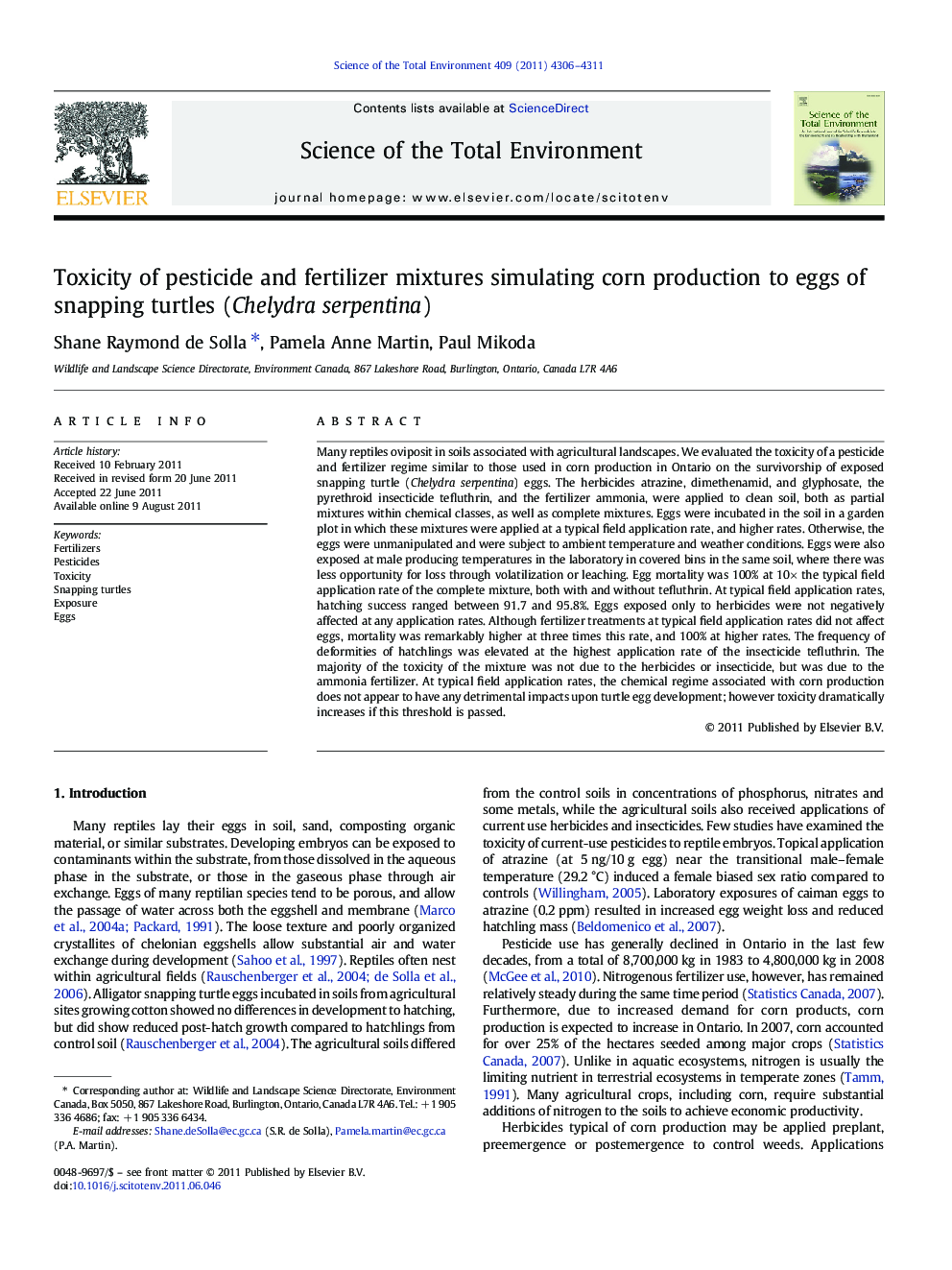| Article ID | Journal | Published Year | Pages | File Type |
|---|---|---|---|---|
| 4429922 | Science of The Total Environment | 2011 | 6 Pages |
Many reptiles oviposit in soils associated with agricultural landscapes. We evaluated the toxicity of a pesticide and fertilizer regime similar to those used in corn production in Ontario on the survivorship of exposed snapping turtle (Chelydra serpentina) eggs. The herbicides atrazine, dimethenamid, and glyphosate, the pyrethroid insecticide tefluthrin, and the fertilizer ammonia, were applied to clean soil, both as partial mixtures within chemical classes, as well as complete mixtures. Eggs were incubated in the soil in a garden plot in which these mixtures were applied at a typical field application rate, and higher rates. Otherwise, the eggs were unmanipulated and were subject to ambient temperature and weather conditions. Eggs were also exposed at male producing temperatures in the laboratory in covered bins in the same soil, where there was less opportunity for loss through volatilization or leaching. Egg mortality was 100% at 10× the typical field application rate of the complete mixture, both with and without tefluthrin. At typical field application rates, hatching success ranged between 91.7 and 95.8%. Eggs exposed only to herbicides were not negatively affected at any application rates. Although fertilizer treatments at typical field application rates did not affect eggs, mortality was remarkably higher at three times this rate, and 100% at higher rates. The frequency of deformities of hatchlings was elevated at the highest application rate of the insecticide tefluthrin. The majority of the toxicity of the mixture was not due to the herbicides or insecticide, but was due to the ammonia fertilizer. At typical field application rates, the chemical regime associated with corn production does not appear to have any detrimental impacts upon turtle egg development; however toxicity dramatically increases if this threshold is passed.
► Snapping turtle eggs were placed in soil treated with pesticides and fertilizers associated with corn production. ► Herbicides were nontoxic at levels tested. ► Insecticides increased deformities at highest exposure levels. ► Fertilizers (ammonia) contributed the most to overall toxicity to turtle eggs.
